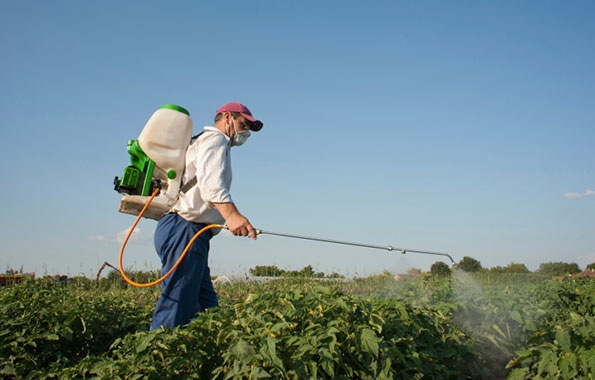Budget includes $5 million to evaluate new pesticide products to help control pests.
August 15, 2019

The California Department of Pesticide Regulation (DPR) and the California Department of Food & Agriculture (CDFA) announced the members of a new cross-sector working group created to identify, evaluate and recommend safer, sustainable pest management solutions that can replace the pesticide chlorpyrifos.
In May, the California Environmental Protection Agency announced that DPR was acting to cancel chlorpyrifos.
Despite the Trump Administration’s reversal of a decision to ban the pesticide at the federal level, California continues to move forward to restrict its use. Chlorpyrifos is used to control pests on a variety of crops, including alfalfa, almonds, citrus, cotton, grapes and walnuts. It has declined in use over the past decade as California growers have shifted to safer alternatives. Use of the pesticide has dropped more than 50% -- from 2 million lb. in 2005 to just more than 940,000 lb. in 2017.
In 2015, DPR made chlorpyrifos a restricted material within California. This means that only trained, licensed professionals who have a permit from a local county agricultural commissioner may use products containing chlorpyrifos. Restrictions on chlorpyrifos use that went into effect in January 2019 following DPR’s identification of the pesticide as a toxic air contaminant will remain in effect pending the cancellation action.
The newly created Alternatives to Chlorpyrifos Work Group includes leaders and experts from a wide cross-section of interests -- including the agriculture industry, California universities, environmental justice groups, farmworker health and safety organizations and pesticide manufacturers, among others -- to ensure that the group represents a diverse range of perspectives. The working group will convene later this month to begin its work.
“Identifying viable alternatives to chlorpyrifos – and developing safer pest management tools – is critically important but challenging work,” DPR acting director Val Dolcini said. “We look forward to collaborating with the members of the work group and others on safer tools, solutions and pest management practices that make sense for all Californians.”
“Farmers have come a long way in reducing their use of chlorpyrifos, but development of alternatives for the remaining users will require significant investment and time for transition,” CDFA secretary Karen Ross said. “We must be practical in finding solutions that fit the pest management realities farmers face, and it is critical that we all work together to address this challenge.”
The working group will:
Develop short-term, practical solutions to transition to safer, more sustainable pest management solutions;
Develop a five-year action plan to identify and develop safer, more sustainable pest management tools, practices and alternatives, and
Begin work in August 2019 and conclude in the spring of 2020.
In January, the Alternatives to Chlorpyrifos Work Group will hold three public workshops in different regions of California to solicit public input on the action plans. Dates and locations of these workshops will be publicized at a later date. In the interim, the public can provide input to the group via email at [email protected]. The public can also sign up for updates about the working group at alternatives to chlorpyrifos listserv.
The development of safer, more sustainable alternatives to chlorpyrifos will be supported by California Gov. Christopher Newsom’s 2019-20 budget, approved by the legislature, which appropriates more than $5 million in grant funding for that purpose. The availability and solicitation of the grants will be announced in the coming months.
DPR announced that it is sending notices to cancel chlorpyrifos product registrations to the product registrants because of the detrimental human health effects associated with the product's use. The registrants have 15 days to request a hearing. If a public hearing is requested, the notices will be filed with the Office of Administrative Hearings.
The working group will identify innovative, sustainable pest management tools, practices and alternatives to chlorpyrifos that are safer for workers, communities and the environment, adequately control the targeted pests and are cost effective. It will be facilitated by Joseph McIntyre of Ag Innovations based in Sebastopol, Cal., while the California EPA, CDFA and DPR will serve in an advisory capacity. A roster of the working group is listed here.
You May Also Like

.png?width=300&auto=webp&quality=80&disable=upscale)

